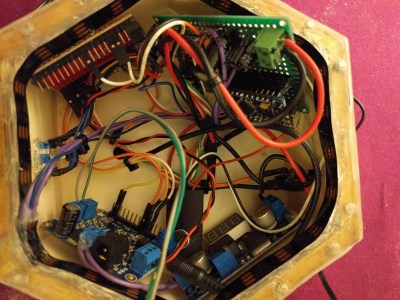There’s an iconic scene from the movie Big where [Tom Hanks] and [Robert Loggia] play an enormous piano by dancing around on the floor-mounted keys. That was the first thing we thought of when we saw [jegatheesan.soundarapandian’s] PC joystick rug. His drum playing (see the video below) wasn’t as melodious as [Hanks] and [Loggia] but then again they probably had a musical director.
At the heart of the project is, of course, an Arduino. An HC-05 provides a Bluetooth connection back to the PC. We thought perhaps an Arduino with USB input capability like the Leonardo might be in use, but instead, [jegatheesan] has a custom Visual Basic program on the PC that uses SendKeys to do the dirty work.
The switches are more interesting made with old CDs, foil, and sponges. The sponge holds the CDs apart until you step on them and the foil makes the CDs conductive. He uses a lot of Fevicol in the project–as far as we can tell, that’s just an Indian brand of PVA glue, so Elmer’s or any other white glue should do just as well.
The glue also handles the fabric parts. When a project says “no sewing” we realize how some people feel about soldering. The CD/foil/sponge switches might be useful in other contexts. We’d be interested in how the sponges wear with prolonged use.
We’ve seen other giant controllers before. Of course, if you really want a big controller, you can’t beat a Nissan (the link is dead, but the video will give ou the idea).
Filed under:
Arduino Hacks 







